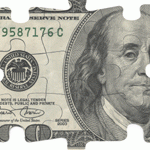Four top publishers Tuesday reaffirmed their commitment to print and discussed revenue ideas for bolstering their products.
The discussion was part of an executive roundtable at the Key Executives Mega Conference in New Orleans.
The publishers of the Star Tribune Media Co., USA Today, The Omaha World-Herald and The Dallas Morning News talked about the revenue opportunities for their content.
For Jim Moroney at The Dallas Morning News, his company is converting the story archives into revenue through content marketing. Companies in the Dallas area are in need of content to populate company newsletters, websites and blogs, and the paper is making its archives available for customers of its digital agency. Clients’ monthly bills average $4,000 a month for services that include access to the archives.
“Marketing has become a content war and nobody is better positioned to win a content war than a content company,” Moroney told the more than 500 attendees at the national conference. “I urge you to have a conversation with your newsroom about it. … I think it can work on any scale in all markets.”
Moroney said when the paper first started the service, there was a minor uproar in the newsroom about it. But, he said, he explained that if American Airlines wants a story to put in its employee newsletter, the paper historically would allow that. The stories, he said, run with a byline and aren’t edited by the client.
The newsroom then got it, he said.
The publishers also are looking to their subscribers to make up the gap left by slow ad sales.
“I think Jim was one of the leaders of being the first in terms of, ‘We need to make subscribers pay more. We can’t count on advertisers,’ ” said Alan Mutter, the panel moderator and the blogger behind “Reflections of a Newsosaur.”
The Dallas Morning News in May 2009 raised prices 40 percent.
“We lost about 12 percent of our subscribers,” Moroney said.
But, it was a good move, he said, and the paper is in the process of raising subscription rates again.
“It raised a lot of money for us and it continues to raise a lot of money for us,” Moroney said. “We’re [at] about 32-33 percent of our total revenue coming from subscribers.”
Current monthly rates are $36.95 for print and $16.95 for all-digital access. The paper was concerned about print subscribers trading down for a digital-only subscription so it hired a research group to talk with readers.
The researchers talked with 2,000 subscribers and asked them if they would cancel print for online at various price points. The research went all the way down to $2.95 per month and still the print subscribers in the study said they wouldn’t end their print subscription in favor of a cheaper, digital option.
“Hardcore news subscribers don’t see digital as a substitute for print,” Moroney said. “They won’t trade down. We say in Texas, ‘You are going to have to take this paper out of my cold, dead hand.’ I don’t think we should apologize for that. We should celebrate that.”
Added Larry Kramer, president and publisher of USA Today, “They’re different products. Even the same content on different platforms is a different product.”
He discussed USA Today’s TV listing products. In print, the list gives readers options, but it has a beginning and an end, which may appeal to some readers. If those readers want to go deeper and find all the listings from prior weeks, they can find those online, he said.
The publishers also discussed how they are monetizing their digital content. Each of the publishers, except USA Today, has some sort of paywall.
Mike Klingensmith, publisher and CEO of Star Tribune Media Co. in Minneapolis, rolled out a pay meter and said it’s the “most important and most successful thing” he’s done during his time at the paper.
“We’ve been able to price subscriptions up,” Klingensmith said. “We have a product we can now sell statewide and nationally.”
The Star Tribune has 27,000 paying digital customers. Print circulation is at 300,000.
“Those were 27,000 people we didn’t have a subscription relationship [with] before November 2011,” he said.
The paywalls work, Klingensmith said, because the smaller papers have unique, local content the readers want.
Kramer said a paywall is harder for a national paper like USA Today because there is more competition.
“Our philosophy is to move to more and more unique content,” Kramer said.
Terry Kroeger, publisher of the Warren Buffett-backed Omaha World-Herald, said his paper is doing journalism that makes a difference and that is resonating with readers. His paper, he said, has been reporting about beleaguered politicians in the state.
Moroney said the newspaper’s competitive advantage is its scale compared to television newsrooms.
Newspaper newsrooms typically are two to four times larger than their TV counterparts and Moroney said that allows newspapers to devote the resources to more in-depth stories with analysis and perspective.
“That’s how we compete and differentiate ourselves from the TV stations,” he said. “The biggest threat to our industry is the continued downsizing of our newsroom.”
Carlie Kollath Wells is a New Orleans-based freelance reporter. She founded NewinNOLAblog.com, a website for new residents in New Orleans, and previously worked for the Northeast Mississippi Daily Journal, Retailing Today and Drug Store News.







Comments